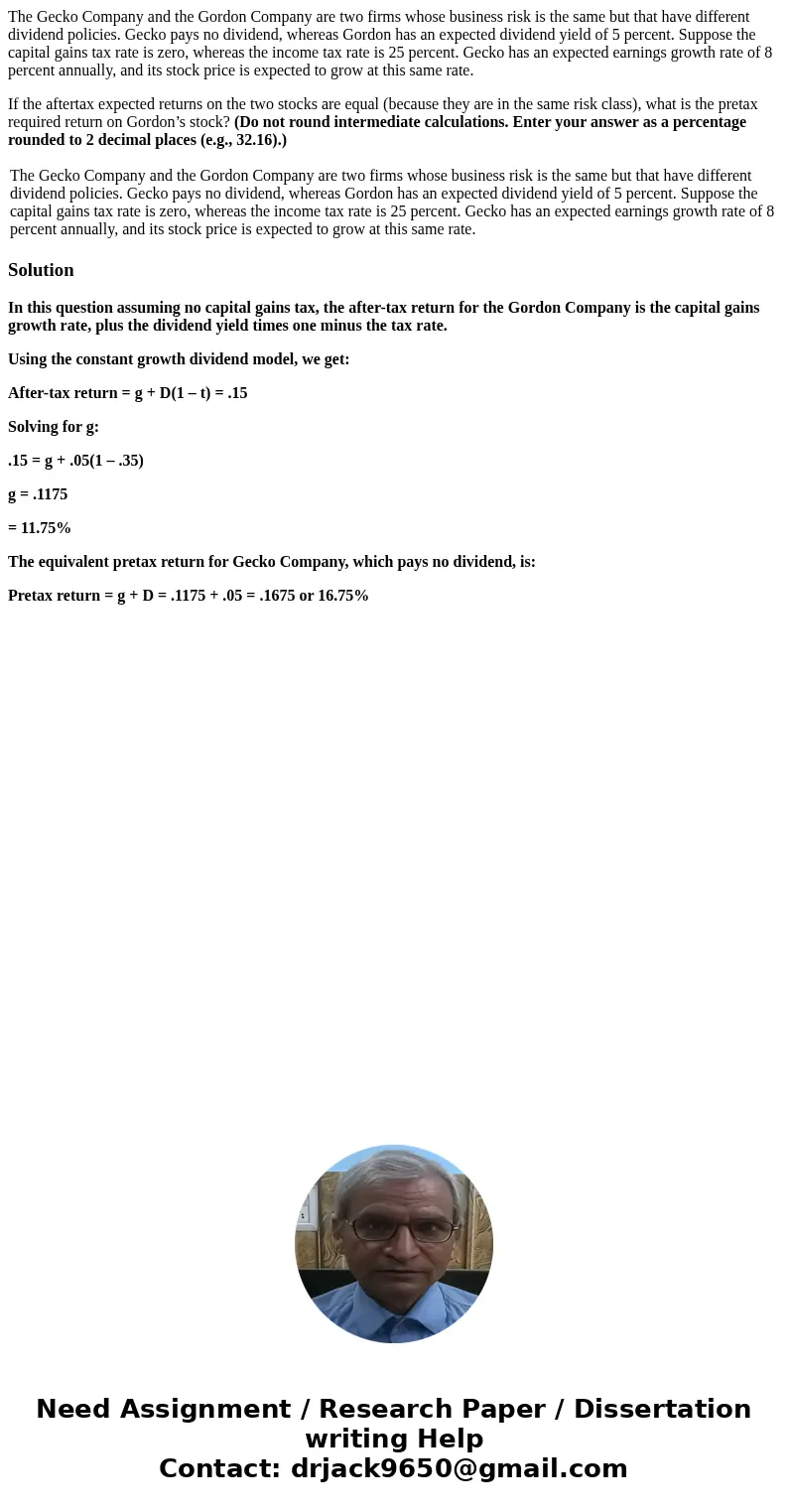The Gecko Company and the Gordon Company are two firms whose
The Gecko Company and the Gordon Company are two firms whose business risk is the same but that have different dividend policies. Gecko pays no dividend, whereas Gordon has an expected dividend yield of 5 percent. Suppose the capital gains tax rate is zero, whereas the income tax rate is 25 percent. Gecko has an expected earnings growth rate of 8 percent annually, and its stock price is expected to grow at this same rate.
If the aftertax expected returns on the two stocks are equal (because they are in the same risk class), what is the pretax required return on Gordon’s stock? (Do not round intermediate calculations. Enter your answer as a percentage rounded to 2 decimal places (e.g., 32.16).)
| The Gecko Company and the Gordon Company are two firms whose business risk is the same but that have different dividend policies. Gecko pays no dividend, whereas Gordon has an expected dividend yield of 5 percent. Suppose the capital gains tax rate is zero, whereas the income tax rate is 25 percent. Gecko has an expected earnings growth rate of 8 percent annually, and its stock price is expected to grow at this same rate. |
Solution
In this question assuming no capital gains tax, the after-tax return for the Gordon Company is the capital gains growth rate, plus the dividend yield times one minus the tax rate.
Using the constant growth dividend model, we get:
After-tax return = g + D(1 – t) = .15
Solving for g:
.15 = g + .05(1 – .35)
g = .1175
= 11.75%
The equivalent pretax return for Gecko Company, which pays no dividend, is:
Pretax return = g + D = .1175 + .05 = .1675 or 16.75%

 Homework Sourse
Homework Sourse